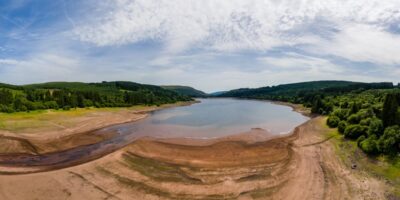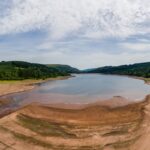The seven key enablers and how countries can take action
Gender mainstreaming in water resources management (WRM) is not new, but implementation is slow. Why? How can countries accelerate progress?
There is growing awareness of the urgency to include all parts of the community in WRM: inclusion reduces inequalities in access and improves the sustainability of water systems. Gender and inclusion policies in WRM have been developed around the world, yet there is still a gap between policy and practice. Policies are not always accompanied by concrete action plans, nor are they adequately funded. As a result, implementation may be insufficient, and monitoring and evaluation may not be sophisticated enough to reveal the true gender and inclusion dynamics within a given WRM context.
What does gender mainstreaming in WRM mean?
Gender mainstreaming goes beyond the issue of equality between men and women. We must also consider the intersectionality between gender and other issues when designing gender mainstreaming strategies for WRM, such as ethnicity, migrant status, sexual orientation, age and disability. Gender mainstreaming is usually interpreted to mean one of the folllowing:
- All gender groups and individuals are represented fairly in water resources management executive and decision-making bodies
- There is equal opportunity to raise voices and participate in the decision-making process on water resources at all levels
- All gender perspectives are fully integrated in water planning, management and decision-making
‘The number of women representatives in water projects and boards should not be the sole goal, neither the ultimate objective of gender mainstreaming. This alone doesn’t guarantee that gender issues are mainstreamed; it is a much wider process. The presence of women won’t radically influence the impact of a project if the women have not been included in the design phase and if all gender needs have not been integrated with defined gender-sensitive objectives.’
Dibya Kansakar, former employee of the Department of Water Resources and Irrigation, Nepal
Key enablers
Many countries have taken significant steps towards advancing gender mainstreaming in WRM. There is no one-size-fits-all strategy, but there are seven key enablers:
- There is strong commitment to gender mainstreaming among the executive leadership at the national level
- Egalitarian legal frameworks and gender are explicitly integrated into water laws, policies and strategies
- Earmarked funding is allocated to gender mainstreaming in WRM
- Supportive frameworks are established for the effective participation and parity of women in the development and implementation of policies, programmes and projects
- Centralised monitoring systems are overseen by a national body
- Investments are made in education, awareness raising, and capacity development
- Multi-stakeholder and intersectoral coordination mechanisms and bodies are in place
Recommendations – what countries can do?
For countries with no or low implementation of gender mainstreaming, a preliminary gender analysis to understand barriers, gaps and opportunities is essential to help lay the foundation for a gender mainstreaming strategy for WRM.
Capacity for this exercise may be developed in collaboration with gender experts and local partnerships with community-based initiatives. There is a strong case for collaboration with the health and water, sanitation and hygiene (WASH) sectors. Ministries can work together to improve the well-being of all citizens while meeting the water and sanitation needs of vulnerable and minority groups. These groups could be empowered to take on new roles, beyond that of ‘water custodians’, and participate in national development agendas.
Countries with a medium level of implementation may be struggling to put a previously developed gender mainstreaming strategy into action. Gender units could be created within all ministries, including for water and/ or environment, staffed with engineers as well as gender experts. These units would take the lead in conducting gender evaluations and gender impact assessments using gender-disaggregated data collected annually.
Countries with a high level of gender mainstreaming, which might have achieved several objectives in their gender mainstreaming strategies related to WRM, should acknowledge that disparities persist in every context. They should continue to implement and document, through disaggregated data, policies that address the asymmetrical relationships in their society. Although representation matters, and it is important to have women in post at the top within WRM, this does not replace the need to design and implement evidence-based gender mainstreaming strategies to identify discriminatory practices, increase the number of women in science, technology, engineering and mathematics (STEM) and related fields, and develop gender budgeting and procurement strategies.
Given the complexity of countries’ political, social and economic systems, we deliberately avoid recommending any particular practice across the board, since there is definitely no one-size-fits-all solution. However, we believe that the key enablers may be common to all countries, and many of the examples from one country, contained in the main report, may be applicable to others.
Acknowledgements
This blog post is based on the summary brief (reproduced with permission from the authors), which draws on the report ‘Advancing towards gender mainstreaming in water resources management’, published by the SDG 6 IWRM Support Programme in 2021. The brief is based on country responses to gender-related questions in the survey instrument for SDG indicator 6.5.1 and additional interviews with 23 countries that are at different stages in the process. The SDG 6 IWRM Support Programme is a coordination mechanism under the guidance of the UN Environment Programme (UNEP), as the custodian agency for SDG indicator 6.5.1, and is coordinated by the Global Water Partnership (GWP) in collaboration with UNEP-DHI Centre and Cap-Net.
Access the full report:
GWP and UNEP-DHI, 2021. Advancing towards gender mainstreaming in water resources management. Global Water Partnership and UNEP-DHI Centre on Water and Environment. Available at: https://www.gwp.org/en/sdg6support/gender/
About UNEP-DHI
The UNEP-DHI Centre on Water and Environment is a United Nations Environment Programme (UNEP) centre of expertise, dedicated to improving the management, development and use of freshwater resources from the local to the global level. The UNEP-DHI Centre operates by drawing on DHI’s technical expertise in water and project implementation, and has attained global recognition for its work in promoting sustainable water resources management and supporting the water-related SDG targets.








